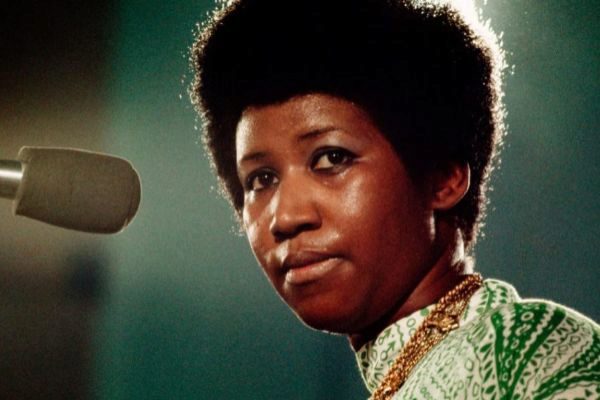The human being is naturally so prone to melodrama that he rarely repairs the accidental and casual of almost everything. Who knows what strange infection we would not be dying of right now if Fleming had not misled with the test tubes? A famous film director sets out to document the closest thing to a miracle in the early 1970s. In January 1972, at the New Temple Baptist Mission church in Los Angeles, Aretha Franklin sings her legendary album Amazing Grace in full . With his eyes closed, his head slightly tilted back and practically without touching the ground, Aretha sings and those present barely give credit. She barely speaks. Carried away. And with her, everyone. However, a small accident turns everything filmed into waste material.
"Yes, as ridiculous as it may seem, everything was as extravagant as anyone worried about using a simple clapperboard," producer Alan Elliot says in San Sebastian that now, 47 years later, he has been responsible for adjusting the pieces and alleviating the infinite problems of planning and technical process, pure enthusiast, just insane. Elliot was barely seven years old when Sydney Pollack shot the film. Only in the 90s, as an employee of Atlantic Records, did the legend of the lost film reach him. And so until the more or less mythical story of Aretha in trance became obsession. He got in touch with an already very sick Pollack (a cancer would kill him in 2008) and he gave him a free way. "At this point you know the tape better than me," says Elliot, who confessed to him the director shortly before he died.
And then there is the clapperboard. This rudimentary mechanism is what serves to synchronize the image and music of a movie . A simple click at the beginning of a shot delimits the visual segments that are to be connected are their corresponding sounds. So easy. "What happened was that the cameras turned on and off without anyone worrying about marking the shots. Which resulted in 15 or 20 different starts for each fragment. Crazy." When the recording ended, about 2,000 different shots without sound were on the editor's table. Elliot says that none of this would have happened if the director had not changed at the last minute. The originally designated was James Signorelli, but the success of Danzad, damn damn made the record company finally decide on the then young Sydney Pollack value. Although I had no idea what a simple clapperboard is for.
However, and returning to the role of chance, it is now time to thank the director for his mistake. "Indeed, much of the value and charm of the documentary has to do with its chaos . The cameras move with total freedom and that makes them access to moments simply magical and unattainable if someone had been around clapperboard hand numbering each shot ", Elliot reflects. Again, as in the case of Dr. Fleming, the mistake is the right thing. And, in this case, the miracle.
For a little less than 90 minutes, what is present is something like the closest thing to hell that paradise can offer. The church is ugly, the blue seats and the fresco of the muscular and newly baptized Christ who presides over everything, directly horrible. The choir of glitter vests of the Southern California Community and the Reverend Master of Ceremonies James Cleveland are directly punished against the wall and, in front, an audience as delivered as badly dressed (or dressed in the 70s) is thrown into luck of mystic-pagan bacchanal that is the same for Hosanna than for a black mass. Between Marvyn Gaye, Carole King and traditional music, the repertoire is already a matter of devotion. And of grace. "The freshness of the recording has nothing to do with the production of the album where choirs and instruments were added," says producer almost devoutly Pollack moves through a stage too bright while giving orders, despairs and shows of a passion just at the height of his impericia. His team are the only white men among a whirlwind of skins and black voices.
"The band," Eliot points out, "with Cornell Dupree, Chuck Rainey and Bernard Purdie, was rehearsing 30 days in the church to find what was called the return cadence." In each pause of the second day of recording, Aretha remains aware of her father, the Reverend CL Franklin. Not far away, teacher and mentor Clara Ward. And in the crowd, two more white spots. There, in the background, you can see the enthusiasm of Mick Jagger and Charlie Watts who were finishing their Exile on Main Street .
The producer says that when the technical problems were finally fixed, more arrived. First there was no way to find the contract and when it appeared, in 2013, Aretha was unable to return to her past. "I understand your decision," says Eliot. "She was already very bad." Aretha died on August 16, 2018 . And now he is resurrected.
The camera moves alive and oblivious to any type of instruction between a show without rules, without limits and without maps. Everything is as improvised as obedient to an immaterial corpus of sacred orders. Everything flows. And everything floats. Without clappers
According to the criteria of The Trust Project
Know more- culture
- movie theater
- music
CineMuere Mardik Martin, screenwriter of 'Wild Bull' and 'Bad streets', at 82
Toronto FestivalThe new Disney comedy: Hitler, the children's friend
CineCiudadano K, the Russian tycoon retaliated by Putin who could live to tell

